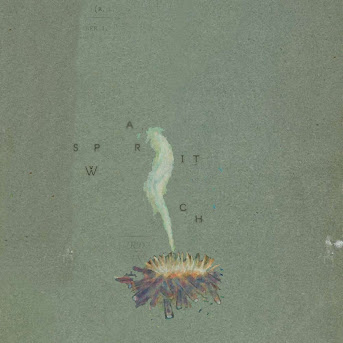BLACKBOX at Schmick Contemporary
Author : Finn McGrath
I exited Chinatown's George Street, drenched, a couple kg heavier from torrential downpour, and entered a boastful massage parlour adorned with signs in all different languages, graphics and colours. I felt pressed into the belly of the Anthropocene.
Walking up three flights of stairs, the incessant background noise of the city, (the Anthropocene's soundtrack) followed me up, and into the small space of Schmick Contemporary.
In an interesting turn of events, I planned to meet and talk about this show and other art things with Thomas Kusturin, Curator of Pr!vat51. We had a great chat over KBBQ with my friend Elliot after this show and it was cool to have this strange sense of closure in chatting with him after writing my review of his show.
Addressing the exhibition - BLACKBOX:
The colour vibrancy felt in this exhibition, with its overwhelming hue of purple, was not any attempt at escapism from the hum, drum, lum of the inner city. But a true acceptance, one done with purpose and intention. Refined, thoughtful and collected -- an interesting group show. I feel like this is a new style of group show appearing in Sydney. Increasingly being what the younger generation of artists are choosing as the 'look' of their exhibitions. Examples of such = @tiles.lewisham @tcs_windows @filter.store @lilaccitystudio
What I am interested in is the conceptuality which this show attempts to embody.
Currently, we find ourselves in a time where dominant threats and technology are usually difficult to embody. For example, we don't see the impacts of artificial intelligence in our lives so immediately as one might have during industrialisation in the 19th century. Although the revolutionary implications of each are similar. As these processes become less palpable and abstracted in material fashion (increasingly online and devoid of form), art, as usual, reflects this change, and so there is then emphasis placed on art writing. For example titling, which allows for whatever artistic abstract associations made to be revealed to the viewer. In BLACKBOX, an unassuming book lay open beneath a glass table, looking through the table onto the book the chapter title reads - 'How to be Human'. A corporate management manifesto for those newlings to the lucid life of an office employee. Both funny and relevant in this show, this book and the accompanying exhibition text set a tone and atmosphere to approach the art whose message was not immediately discernible.
In the exhibition text the intention of the show is explained as seeking to crack open the seemingly infallible techno-capitalist powers. This show succeeds this through a mode of engaging with the world which most of us have internalised by now. It is an approach to looking, a looking focused not on the what but the how, the system rather than the symbol, in other words, a critical focus onto the coming into being of a thing. This opposes the tenet of the it of a thing, popularly described in Lacanian thought as "the mysterious something more, the indescribable excess which is the object cause of my desire."
I'll bring this back to the artworks.
Harry De Vries' 3D printed objects, in which the process of making is noticeable in the lines of printed plastic. This artmaking reminds me very much of the neo-baroque ideal of seriality, a process of copying, serialisation, 'the system of the series'. De Vries' 3D printed Scapulimancy allows for an 'infinite work in progress' in seriality, a work which may have no end or beginning. As the 3D object exists in data form before being printed, and then still once the printing is complete.
It is that same element of the 'infinite' which I also see in both McEwen and Carman's work. In viewing these works their goal is not reveal all, but toy with a viewers expectation and perception - encouraging one to produce their own work by using what elements provided to them by the art. In McEwen's work Possible Related Search: Art (Peer Scan) it is the title and internet-like visuals which may direct viewers to a certain construction. In Watch Jr. Drive by Carman, it is the deep purple void interrupted infrequently by canvas, which shatters this commonplace belief in a closed art object. This sentiment opposes the demands of any kind of capitalist power, the unfinished product is the rejection of totalitarian, capitalist and colonial logic which is the rigging of profitability.
One might call this a deceptual approach to art, or that the choice of an unfinished object is nonsensical. Yet, the truth is that it does not deflect or prohibit meaning in any way, but is intended to prevent it from being the keystone. Making it transitory. Dynamic and evolutionary. Like machines.
The accompanying artist statements and exhibition text is what makes this show, by reading it we glean how these artists have daringly approached technology through material which is not immediately recognisable as attached to contemporary technologies.
The astounding growth at which our technocentric age has undergone is almost unfathomable. Indeed, in terms of the adaptability and precision that its resources have realised, we will, in the very close future, need to quickly reconcile with radical changes in our ancient industry of 'the beautiful' in what I expect to be a magical, fantastic way.
PDF of all exhibition related text
The show was one-day-only at Schmick Contemporary @schmickcontemporary: 2.706. George Street. Chinatown
Artists : Tommy Carman, Annabelle McEwen, and Harry De Vries
Here is a little something Harry and I cooked up a little while ago about AI as well: dreaming-in-symbiosis






Comments
Post a Comment